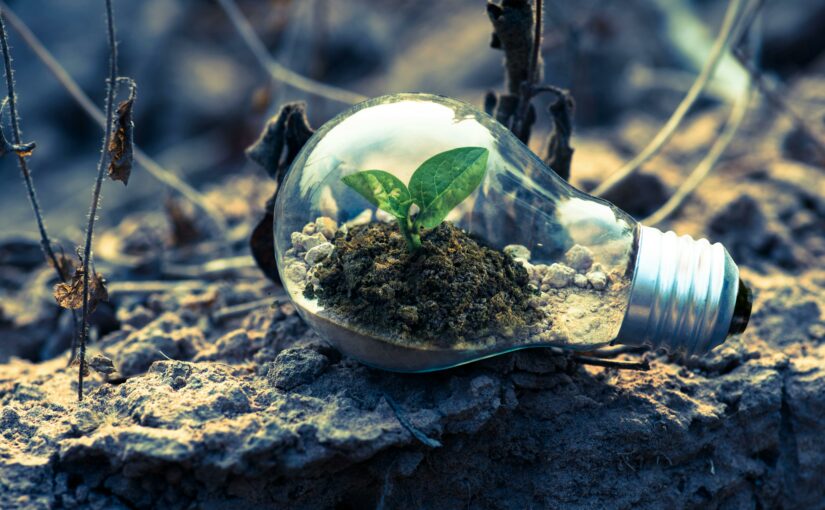Thinking about ways to boost your home’s value without turning your living space into a construction zone? You might love this: going green (sustainable upgrades) can actually give your property a healthy bump in worth. It sounds fancy, but here’s the reality—simple, eco-friendly home improvements leave a big, positive impact on both your wallet and the environment. Best of all, you don’t need to spend a fortune or live off-grid to make it happen.
In this post, we’ll chat about the power of sustainable upgrades, why they matter for homeowners, and how you can put them into action. My goal is to make this easy to digest and fun to read, so let’s dive right in.
Why Eco-Friendly Homes Matter
Sustainability isn’t just a buzzword thrown around by big companies. Real people benefit from green practices every single day. When we talk about going green at home, we’re looking at a simple equation: less waste, lower energy consumption, and improved indoor living conditions. That might seem like a huge claim, but it makes sense. Here’s why:
- Lower Monthly Bills: Insulation, energy-efficient appliances, and strategic water usage can slash your electricity and water bills. Who doesn’t want extra cash in their pocket each month?
- Healthier Living Spaces: Many green products—like low-VOC paints, natural flooring, and effective air filters—offer a healthier indoor environment. Goodbye to that musty smell in the basement, right?
- Bigger Future Returns: Even if you’re not planning to sell next month, an eco-friendly approach can boost your home’s value down the line. Buyers love a house with modern upgrades. That extra edge can translate to serious profit.
But there’s more to it than numbers. Going green also feels good. Sometimes, you just want to know you’re doing your part. And let’s face it, giving back to the planet is a pretty cool thing to do.

Which Sustainable Upgrades Should You Consider?
You have a ton of options. Some are pricier, like solar panels or geothermal systems. Others are cheap and easy, like switching to LED lights or adding weather stripping around your doors. It all depends on how deep you want to go. Here are a few ideas to whet your appetite:
- Insulation: Proper insulation keeps the heat in during winter and out during summer. It’s almost like putting a cozy sweater on your home.
- Energy-Efficient Windows: Old windows can let out a lot of air. Upgrading to double- or triple-pane windows cuts energy loss and reduces outside noise.
- Low-Flow Fixtures: Faucets and showerheads that use less water can save gallons every week, especially in a busy household.
- Smart Thermostats: These gadgets learn your temperature preferences and adjust your HVAC system. They can pay for themselves in energy savings.
- Solar Panels: Yes, the up-front cost can feel scary. But you often get rebates and tax incentives, plus a lower electric bill. Over time, solar can really shine as an investment.
- Green Landscaping: Drought-resistant plants, rain gardens, or even a small composting area can shrink your water bill and beautify your yard.
Pick a path that feels right for you. You don’t have to do everything at once. A step in the right direction is better than no step at all.
Budget-Friendly Green Upgrades
Let’s be honest. Sometimes money can be tight, and that’s okay. Sustainable improvements don’t always mean shelling out thousands. Here are a few cost-conscious ways to make your property more eco-friendly:
- Switch to LED Bulbs: Old-school incandescent bulbs burn through power. LED bulbs use a fraction of the energy and last way longer.
- Unplug Unused Electronics: If your TV is off but still plugged in, it’s actually sipping power. A simple power strip can help you turn everything off with one click.
- Hang Dry Your Laundry: This might sound old-fashioned, but letting your clothes air out on a line saves energy and makes them smell amazing.
- Seal Air Leaks: Sometimes, your home’s biggest energy drain is a drafty window or a gap under the door. Foam sealant and door sweeps are super cheap solutions.
- Install Faucet Aerators: These reduce water flow without messing up your water pressure. You’ll notice the difference when your water bill arrives.
It’s easy to assume that green always means expensive. But these smaller moves can add up to significant savings over time.
The Payoff: Potential Return on Investment
Now, let’s talk about why these sustainable upgrades matter for your home’s value. In many markets, demand for eco-friendly homes is growing. Buyers check energy-efficiency ratings alongside square footage and location. Why pay high monthly utility bills when you can move into a more efficient property?
Sell Faster, Sell Higher
Houses that advertise solar panels, brand-new insulation, or energy-efficient appliances often sell faster. Buyers see less hassle and fewer up-front costs. If you highlight the lower electric bill or updated windows, you’ll attract more serious offers. Supply and demand can boost your final sale price. It’s a simple real estate truth: when more people want your house, you can hold out for a bigger check.
Attract Eco-Conscious Renters
Not looking to sell? If you rent out your place, green upgrades often mean more reliable, longer-term tenants. Sustainable living appeals to people who care about the planet—or who just want lower utility bills. Better tenant retention means less stress for you. You also enjoy more consistent rental income over time.
Market Differentiation
Stand out in a neighborhood full of similar models. Let’s say you live in a row of nearly identical suburban homes. If you’re the one who shows off a brand-new solar setup and cozy, temperature-controlled rooms, you have an edge. You can market your property as cutting-edge and future-proof. That can lead to better negotiating power down the road.
Beyond the House: Sustainable Land Use
Maybe you own more than a house. Perhaps you have a bit of land. In that case, you can explore even more ways to go green. Your backyard can become a haven for native plants, pollinators, or even a small vegetable patch. If you want to dig deeper into how land can feed a family daily, check out our post on Real Estate on Your Plate: How Much Land Feeds a Family Daily for some eye-opening perspectives. You’ll learn how even a modest plot of land can produce a surprising amount of fresh produce.
Taking a holistic approach to land use makes your property even more attractive to potential buyers or renters. It’s not just a house; it’s a lifestyle. Today’s consumers crave authenticity and conscious living. Show them that your property aligns with those values.

How to Get Started With Sustainable Upgrades
Let’s say you’re ready for some eco-friendly action. Awesome. Here’s a quick game plan to keep you organized:
- Set a Budget: Decide how much money you want to invest. This helps you pick and choose upgrades wisely.
- Do a Home Energy Audit: Some utility companies offer free or low-cost audits. They’ll show you exactly where your home loses energy.
- Prioritize the Basics: Focus on insulation, sealing air leaks, and updating old appliances first. These bring immediate savings.
- Gather Quotes: If you’re thinking of solar panels or a bigger project, get at least three quotes from reputable installers.
- Check for Rebates: Research local, state, or federal incentives. You might qualify for tax breaks or rebates on energy-efficient appliances.
- Plan for the Future: Keep records of everything you install. This includes warranties, energy bills, and receipts. Buyers love proof of upgrades.
Remember, this isn’t an overnight transformation. Pace yourself. Even a few small changes can make your house more comfortable, cut your bills, and boost resale value.
Common Questions
Will I get my money back when I sell?
Most sustainable upgrades pay for themselves in the long run. Some might only break even, but the lifestyle benefits and monthly utility savings still make them worthwhile. Plus, homes with clean energy improvements often attract offers more quickly.
Do I need to hire a professional?
That depends on the project. Simple tasks like installing weather stripping or low-flow fixtures are easy DIY jobs. But for larger upgrades like solar panels or complete HVAC overhauls, professional help ensures everything meets safety standards and code requirements.
What if my HOA has rules?
Check your homeowners’ association guidelines. Some HOAs limit visible changes, like solar panels on the front of the house. However, many states now have “solar rights” laws, which prevent HOAs from banning panels entirely. Always confirm before you invest.
Final Thoughts on Sustainable Upgrades
Going green can feel intimidating at first. But when you break it down, you’ll see a series of small, doable steps that lead to a healthier home and a better resale value. You’re not just investing in your property; you’re investing in a future where you feel good about the way you live.
So, if you’re up for the challenge, start with something simple like replacing your old bulbs or sealing those drafty windows. Then, consider leveling up to bigger moves like solar or a high-efficiency heating system. Keep track of your monthly bills to see real progress. And if you have land, think about how a more sustainable approach could help you become a mini-producer of your own fresh food.
At the end of the day, green upgrades aren’t just about hugging trees and saving polar bears—though those are fine goals! They’re about practical, everyday changes that benefit your wallet and your health. And yes, they’ll help out the planet, too. That’s a serious win-win if you ask me. Good luck with your sustainable makeover, and have fun watching your home’s value climb alongside your commitment to a greener life.
